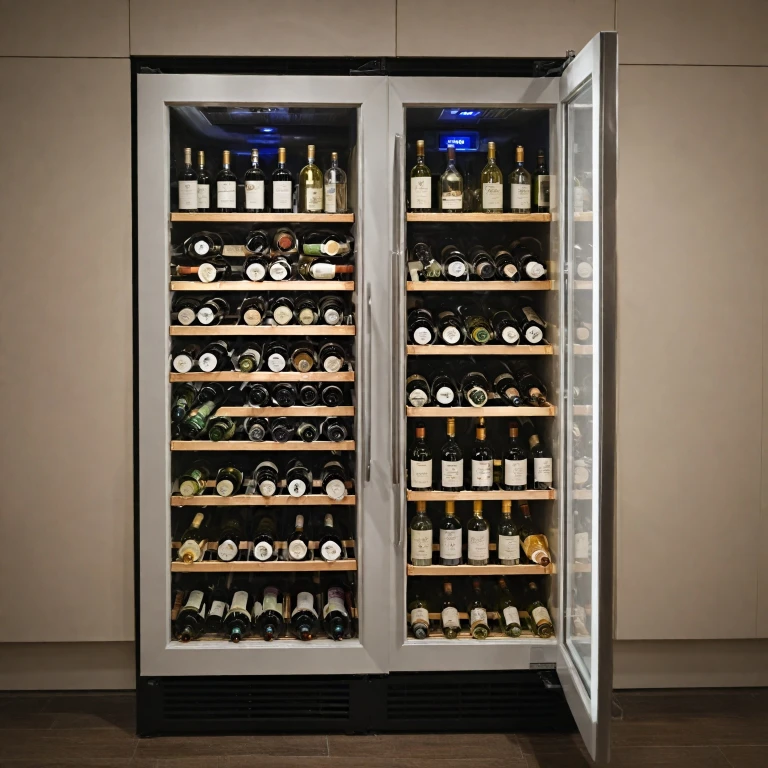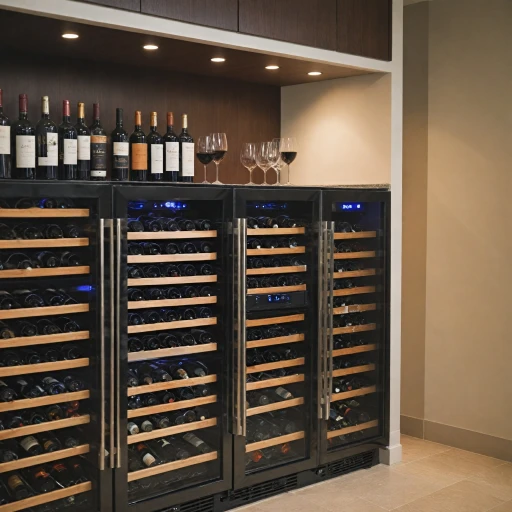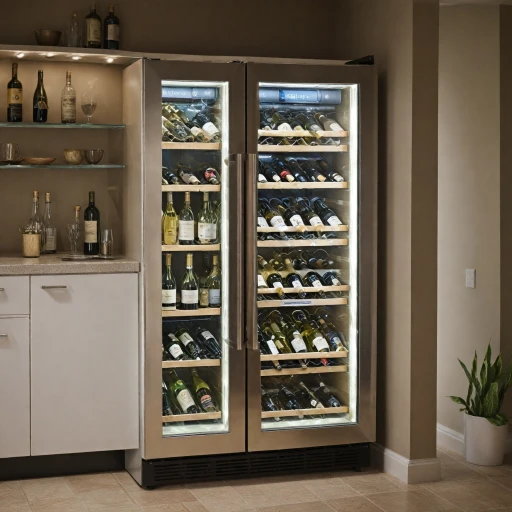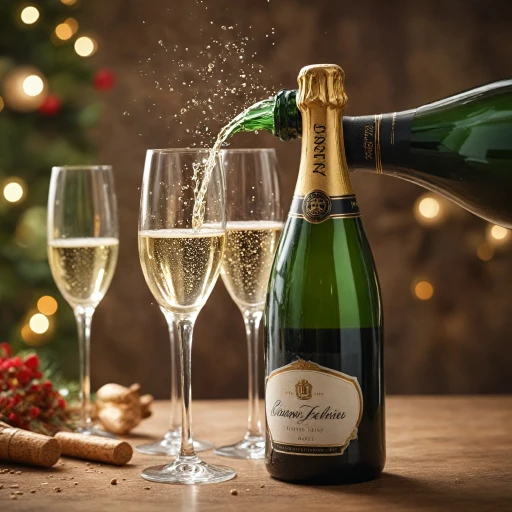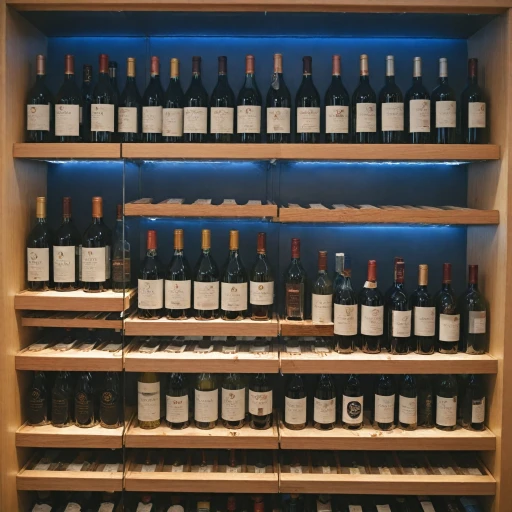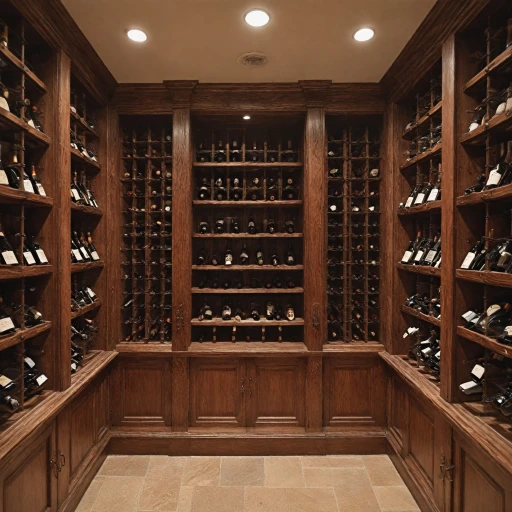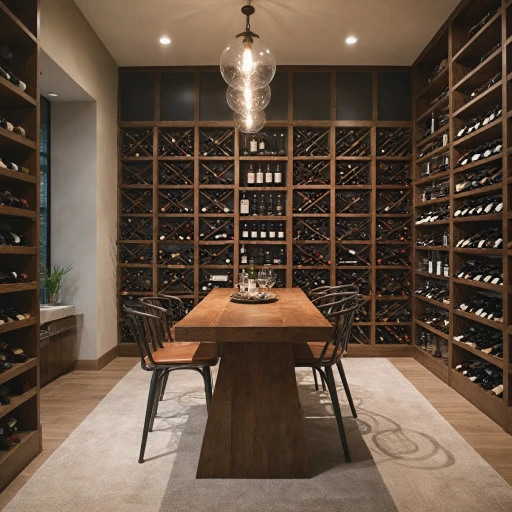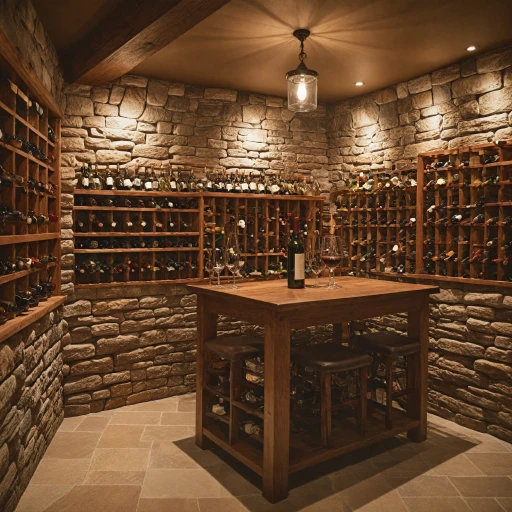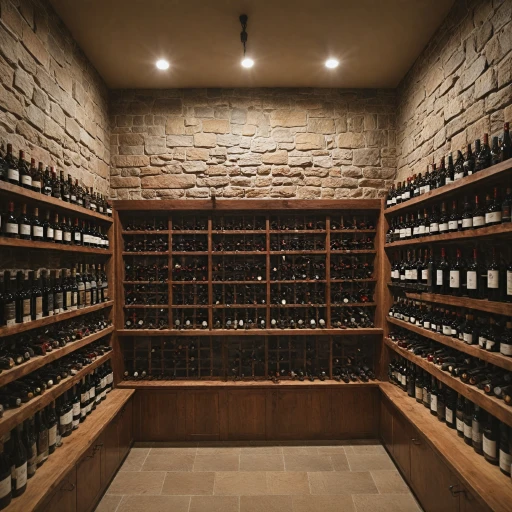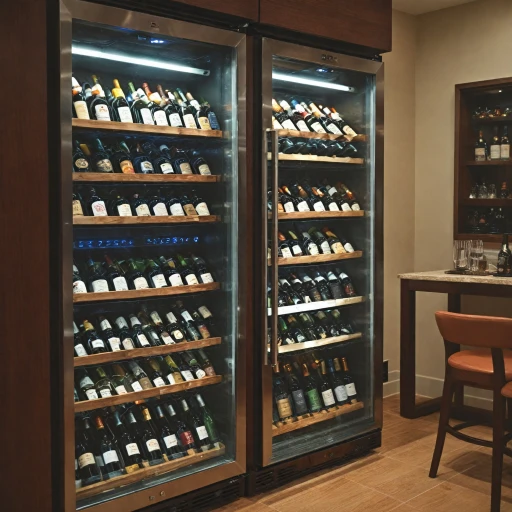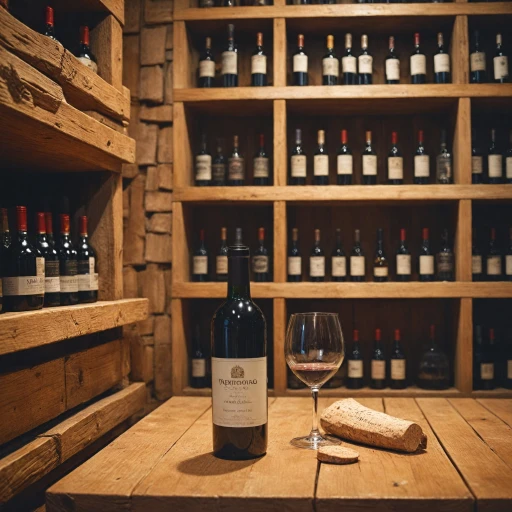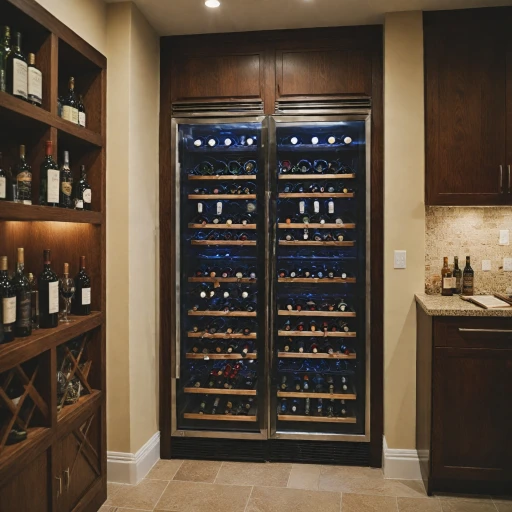
Understanding the Importance of Temperature for White Wine
Why Temperature Matters for White Wine Storage
Understanding the significance of temperature in storing white wines is essential for any wine enthusiast. The temperature at which a white wine is stored can greatly influence not only its taste but also its aging potential and aroma. Unlike red wine, which at times is served closer to room temperature, white wine requires cooler temperatures to maintain its fresh and crisp characteristics.
White wines are often best enjoyed at a cooler temperature than their red counterparts. This is because the delicate aromas and flavors of white wines emerge at lower temperatures. Serving a white wine that has been stored correctly at its ideal temperature can enhance the tasting experience drastically.
Having the correct storage temperature in your wine cooler or fridge is particularly important if you own a collection that includes both white and red wines. Many wine fridges come with dual zone wine storage, allowing for separate compartments and tailored temperature settings for different wine varieties. Maintaining the appropriate cooler temperature ensures that your white wine bottles retain their intended taste and serve as an exceptional complement to your dining experiences.
An often-overlooked aspect of wine storage is the transition from storage to serving. When white wines are stored at the right temperature, they're ready to be served at their optimal serving temperature, which enhances the flavors and overall enjoyment. If you're keen on optimizing your refrigerator wine shelf for perfect storage, it's important to consider how temperature plays a critical role in this aspect as well. For more insights on achieving the ideal storage conditions, you can visit our blog on perfect storage practices.
Ideal Temperature Range for Different White Wines
Setting the Right Temperature for Various White Wines
When it comes to storing white wines in your wine fridge, understanding the ideal temperature range is crucial for preserving their unique flavors and characteristics. Unlike red wines, which are often stored at room temperature, white wines require a cooler temperature. This is because the refreshing qualities of white wines are best preserved when stored correctly, allowing them to be served at their optimal serving temperature.
The varied flavors of white wines mean that they benefit from distinct storage temperatures. For instance, full-bodied whites, such as Chardonnay, typically fare well between 50-60°F (10-15°C). Their rich texture and complex aromas open up beautifully when allowed to rest in this zone.
- Light and zesty whites like Sauvignon Blanc shine between 45-50°F (7-10°C). This cooler range helps maintain their vibrant acidity and refreshing profiles without muting any of their delicate notes.
- Sweet white wines, including Riesling, Although stored in similar conditions to lighter whites, these wines require a more tailored approach, especially considering they’re often served slightly warmer to accentuate their sweetness.
- Using a dual zone wine refrigerator can be particularly useful. It allows you to divide your storage between varieties, ensuring that each bottle sits at its ideal cooler temperature.
By setting your wine cooler to accommodate these specific storage temperature ranges, you ensure that each white wine bottle not only maintains its integrity over time but also delivers the expected tasting experience when served. Keeping these details in mind avoids the common pitfall of serving a wine that has been stored at an inappropriate temperature, thereby preserving its intended flavor profile.
How to Set Your Wine Fridge for Optimal White Wine Storage
Finding the Perfect Temperature Settings
Setting your wine fridge correctly is crucial for preserving the delicate flavors and aromas of white wines. To achieve optimal wine storage, it's essential to understand how to adjust the cooler temperature appropriately.- Single Zone vs. Dual Zone Fridges: If you own a single-zone wine fridge, set the temperature for the type of white wine you store most frequently. For those with diverse collections, dual-zone wine fridges allow you to store red and white wines separately, each in its ideal storage temperature range.
- Fine-Tuning Based on Type: Most white wines are best stored between 45°F and 50°F. Cooler temperatures are ideal for sparklings and lighter whites, while fuller-bodied wines can handle slightly warmer settings close to room temperature.
- Avoiding Temperature Fluctuations: Consistency is key when it comes to wine storage. Avoid sudden temperature changes which can negatively affect your wines over time.
Common Mistakes in Storing White Wine and How to Avoid Them
Avoid These White Wine Storage Pitfalls
Storing white wine at the wrong temperature or in unsuitable conditions can diminish its taste and quality. Here are some common mistakes to avoid and tips for maintaining your bottles at their best.- Incorrect Temperature Setting: Each type of white wine has its own ideal storage temperature. A general mistake is storing them either too cold or too warm. Make sure to adjust your wine fridge to fit the specific needs of each varietal.
- Using a Single Zone Wine Fridge for Multiple Varietals: While dual zone fridges are preferable for storing diverse collections, a single zone model can be used effectively by consistently maintaining an average suitable temperature for most white wines.
- Overcrowding the Fridge: Filling your wine cooler to maximum capacity can impede air circulation around bottles, resulting in uneven cooling. Allow space for air movement to ensure each bottle maintains its ideal temperature.
- Exposing Wines to Light: Both natural and artificial light can negatively affect wine. Ensure your wine storage area is shielded from light exposure to preserve the wine’s integrity.
- Ignoring Humidity: While most wine fridges regulate humidity to some extent, it's essential to occasionally check humidity levels to prevent the corks from drying out, which can lead to spoilage.
The Role of Humidity and Light in Wine Fridge Storage
The Impact of Humidity and Light on Storing Wine
When it comes to wine storage, be it for white or red wines, the often-overlooked factors of humidity and light can significantly influence the quality and longevity of your bottles. Although maintaining the correct storage temperature is imperative, understanding how to manage humidity and light exposure will ultimately enhance the integrity of your wine collection. Wine cooler experts emphasize that wine fridges should ideally maintain a humidity level of around 50% to 70%. This range helps prevent the corks in the bottles from drying out, which can lead to oxidation, an issue that affects the flavor profile and quality of the wine. Conversely, too much moisture can encourage mold growth on corks and labels, deterring from both the aesthetic and structural integrity of the wine. Furthermore, when setting up your wine fridge or dual zone cooler, it's important to consider light exposure. Wines are susceptible to damage from UV rays, which can break down the lovely flavors and aromas you look forward to tasting. Hence, wine experts recommend storing bottles away from direct sunlight, making sure your cooler has a door that mitigates light exposure. In essence, achieving an ideal balance in humidity and minimizing light exposure work in tandem with the controlled temperature settings of your wine fridge. By paying attention to these factors, you'll be able to preserve the finesse of your white wines, ensuring they are ready to be served at their best.Maintaining Your Wine Fridge for Consistent Quality
Regular Maintenance for Optimal Performance
Keeping your wine fridge in pristine condition is crucial for consistently serving wine at the right temperature. Regular maintenance not only helps in maintaining the ideal storage temperature but also ensures that your wine cooler operates efficiently for years to come.
Cleaning Your Wine Fridge
One of the simple yet effective ways to maintain your wine cooler is through regular cleaning. Dust and debris can accumulate, particularly in the coils and vents, impeding airflow and causing the refrigerator to work harder than necessary. To prevent this, clean the exterior periodically and vacuum the coils and vents. This would help in sustaining the optimal wine storage environment for your white wines.
Checking Temperature and Humidity Settings
Consistently check your temperature settings, especially if your wine fridge features a dual zone setup. Accuracy in temperature settings for both white and red wines is crucial for ensuring that each bottle is served at its respective ideal serving temperature. It's also essential to maintain proper humidity levels as this will prevent the corks from drying out, keeping your wines fresh.
Inspecting Door Seals
Another aspect that requires attention is the door seal. Over time, seals can become worn out or lose their elasticity, which might allow warmer air to seep into the cooler, disrupting the wine storage environment. Inspect door seals regularly and replace them if necessary to ensure your wines are stored at their intended cooler temperature.
Rotating Your Wine Bottles
For those with a collection of both red and white wines, rotating your bottles occasionally is a good practice. This ensures that different wines are stored at their optimal storage temperature and prevents any bottle from being constantly located near the vent or light source, which can affect the wine quality over time.
By sticking to a regular maintenance schedule, you not only ensure that your white wine remains at an optimal temperature but also prolong the lifespan of your wine cooler. This guarantees perfectly chilled wine every time you open a bottle, enhancing your wine drinking experience.
